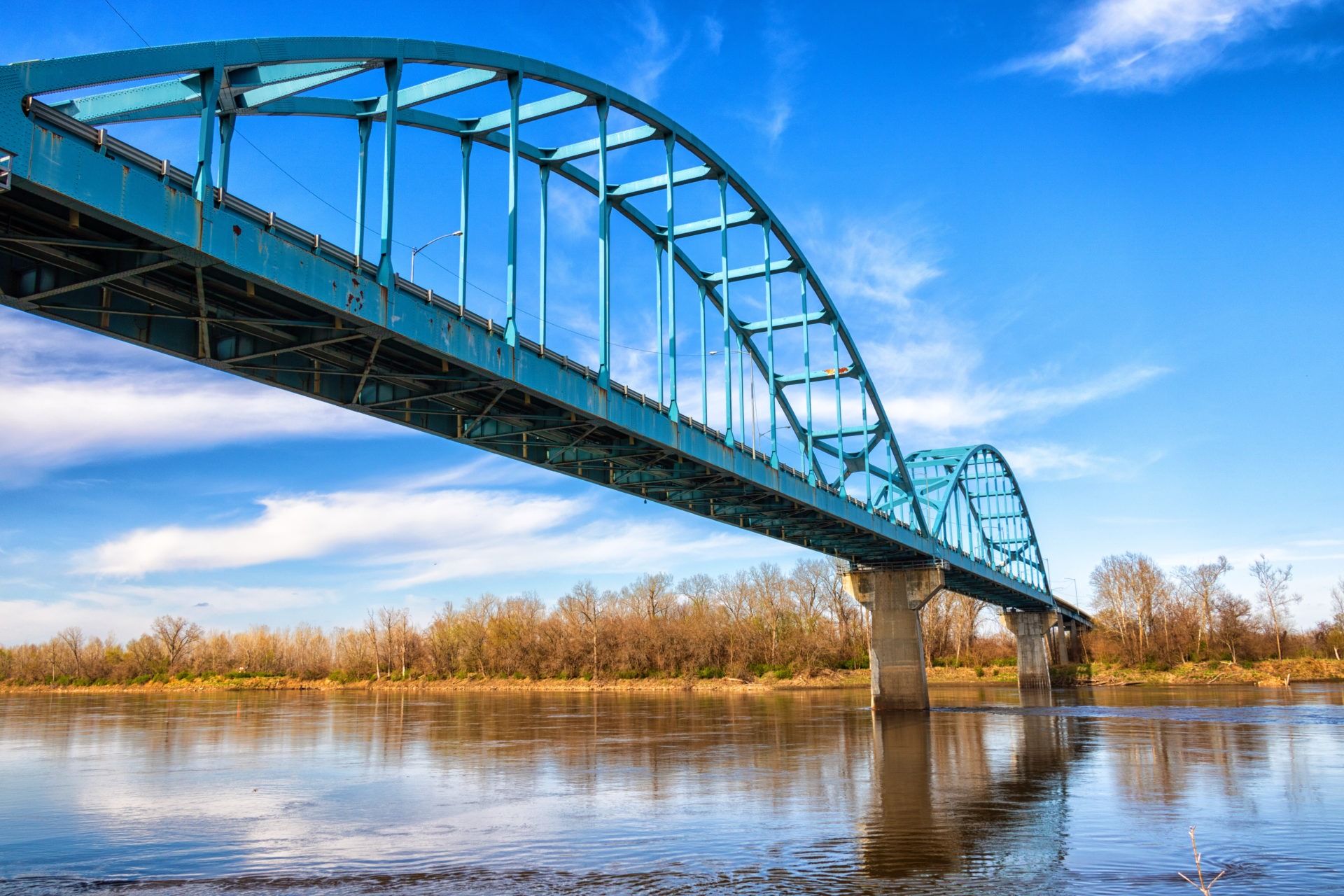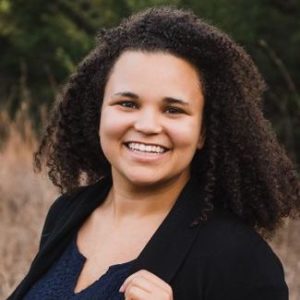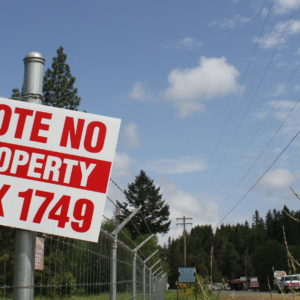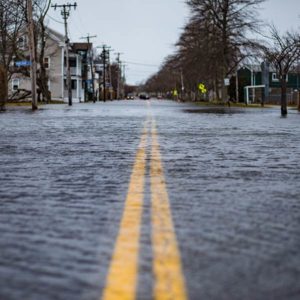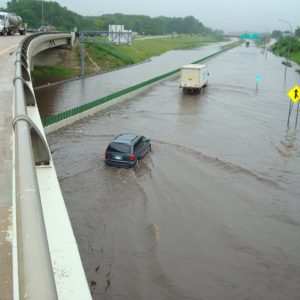The 2021 Infrastructure Investment and Jobs Act (IIJA, or Infrastructure Bill) created more than $550 billion in new federal funding for capital improvement projects. Over $100 billion of that funding will be dispersed as competitive grants.
Many communities will struggle to compete for IIJA funds because they lack stable and equitable tax and revenue strategies to meet grant match requirements and support long-term infrastructure maintenance.
Building resilient tax and revenue strategies
Public finance is a key component of community resilience. As communities seek to take advantage of new funding for infrastructure, they are grappling with three main questions regarding the need for local revenue:
- What revenue options are allowed by state law?
- How will revenue and costs change in the long term?
- How do local taxes and revenue impact equity?
Here we explain those questions more fully and provide examples using local government revenue options in Kansas as a case study.
1. What revenue options are allowed by state law?
Diversifying revenue sources is a key strategy for building resilient local budgets. The highly fragmented public finance system in the United States results in fiscal policies that vary widely from state to state and community to community. Consequently, there is no “standard” local government budget because the mix of tax and revenue strategies legally available depends on location.
Many states impose tax and expenditure limits that constrain how local governments are able to raise, spend, and save revenue. On the one hand, proponents argue that these limits provide tax incentives to attract economic investments, rein in government expansion, and alleviate tax burdens on property owners. On the other hand, opponents argue that the restrictions limit local government autonomy, prevent critical investments in infrastructure and services, exacerbate inequities, and constrain recovery efforts after economic shocks and disasters.
Beyond taxes and fees, local governments are experimenting with new and creative revenue strategies. There is increasing interest in impact investing, private-public and/or public-public partnerships, land value capture, public asset management strategies, and urban wealth funds. Understanding the range of options available to a local government depends on knowledge of state and local fiscal policies, as well as local political will.
2. How will revenue and costs change in the long term?
Although long-term budgeting can be time-consuming and expensive for local governments, it can help communities prepare for expected and unexpected economic shifts. Creating forecasts for changes in revenue and costs over the next 10 years (excluding one-time revenue) can help build resilience and plan for ongoing maintenance costs created by Infrastructure Bill investments.
Questions to consider for long-term budgeting include:
- How dependable are current revenue sources?
- Which taxes and fees are set to expire over the next 10 years?
- What capital improvement projects and maintenance costs are expected over the next 10 years?
- How are the community’s economy and demographics changing? How will this impact local government revenue, service demand, and costs in the long term?
- What revenue sources are vulnerable to disasters and impacts from climate change?
- What state policies are being debated that would impact local government budgets?
Subscribe to our newsletter!
3. How do local taxes and revenue impact equity?
Local governments’ fiscal policies and associated assessment and appeals processes are inherently intertwined with equity outcomes. Revenue strategies can be designed in ways that exacerbate equity (regressive) or increase equity (progressive).
Local governments often rely on fees, fines, charges, and special assessments to raise revenue as workaround solutions to restrictive state fiscal policies. However, fees and fines are often regressive, disproportionately burdening lower-income residents. Fees and fines can also compound social justice issues, such as when local governments rely on traffic tickets and court fees to fund key government services.
Many state and local governments are experimenting with tax policies to create more equitable outcomes. Local governments can design fees and fines with equity in mind by creating a segmented pricing structure to ensure people are only asked to pay for what they can reasonably afford. Local governments can also exempt necessities from sales taxes, including groceries and utilities. These progressive fiscal strategies can reduce burdens on lower-income residents. More comprehensively, public finance equity reviews can help local governments understand how their decisions about raising and spending revenue improve or compound equity impacts.
Case study: Local government revenue in Kansas
As part of Headwaters Economics’ FloodWise Community Assistance program, we partnered with the City of Manhattan, Kansas, to identify the range of options available to local governments in Kansas for raising revenue for stormwater management and flood risk reduction projects. Although this inventory of revenue strategies is specific to communities in Kansas, many of the options are available to local governments in other states. Download this summary of Kansas local government revenue sources and examples.
Historically, the State of Kansas has had relatively few restrictions on how local governments raise and spend revenue. However, in 2020, the Legislature passed a bill that imposes stricter limits on property tax increases, curtailing local governments’ abilities to raise property taxes when needed. The state constitution also requires a balanced budget for any local government fund that relies on taxes.
Our research identified the following local government revenue sources that can be used to fund stormwater management and flood risk reduction projects in Kansas. These strategies can create revenue for new operations and maintenance costs or to back debt financing used for local match requirements.
Taxes
- Property tax: A 2020 bill requires that property taxes remain revenue neutral by default. If an increase is proposed, it must be approved through a public hearing and vote in addition to the normal budgeting process.
- Local option sales tax: Local governments can impose a local options sales tax, capped at 4% between the city and county.
- Utility sales tax (also known as franchise fees): An additional sales tax can be collected at the local level on utilities, including heat and electricity, cell phone services, and cable television.
- Intangible income tax: This tax is relatively unique to Kansas. The tax can range from 0.125% to 2.25% on earnings and dividends from savings accounts, stocks, bonds, mutual funds, and trusts. It does not count toward the 4% local option sales tax.
Fees and Districts
- Stormwater utility fee: Many Kansas communities have a stormwater utility fee; amounts vary from place to place. Some local governments collect a flat rate, and others calculate the fee based on impervious surface area, property values, or other variables.
- Community improvement districts: Communities can create districts with special assessment fees and sales taxes to fund public and private development projects, including stormwater improvement and flood control projects.
Thinking strategically about infrastructure investments
Federal infrastructure funding is clearly needed in the United States. From communities that have been systematically overlooked for federal funding to communities facing outsized risks from disasters, local governments need funding for critical infrastructure. The Infrastructure Investment and Jobs Act will help meet the upfront costs, but it does not provide stable and predictable revenue to local governments for long-term maintenance.
Now is the opportune moment for local governments to reassess revenue streams, identify potential operations and maintenance funding gaps, and prioritize local funding solutions that strengthen financial stability and equity. It is also the time to reform state and federal fiscal policies to increase local autonomy and enable local investment in resilience.
Acknowledgments
We would like to thank Marcus Pearson of Pearson Law Group for his contributions to this research.
